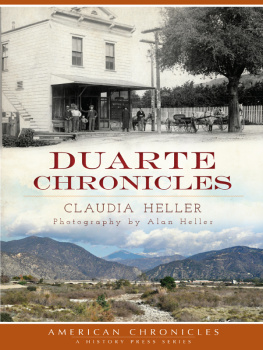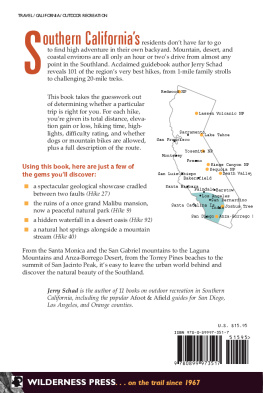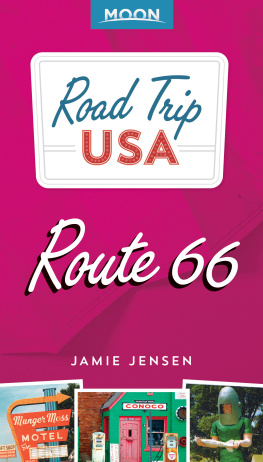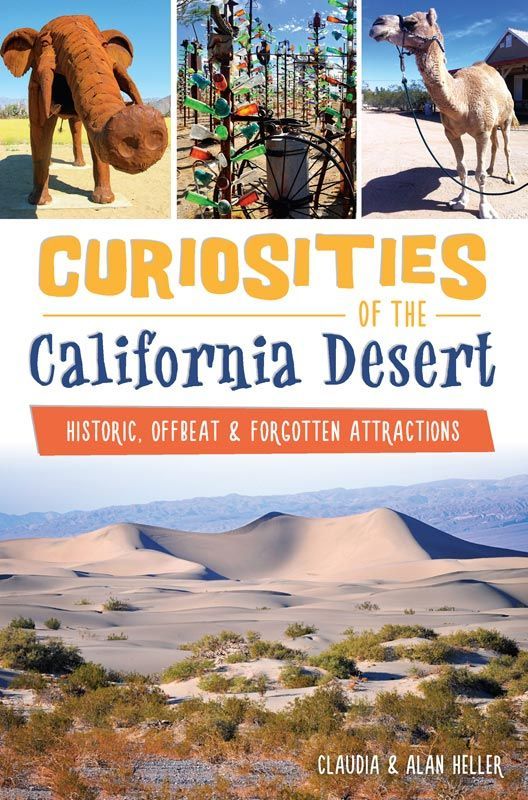

Published by The History Press
Charleston, SC 29403
www.historypress.net
Copyright 2015 by Claudia and Alan Heller
All rights reserved
Unless otherwise noted, photographs are by Alan Heller.
First published 2015
e-book edition 2015
ISBN 978.1.62585.621.0
Library of Congress Control Number: 2015946394
print edition ISBN 978.1.46711.837.8
Notice : The information in this book is true and complete to the best of our knowledge. It is offered without guarantee on the part of the author or The History Press. The author and The History Press disclaim all liability in connection with the use of this book.
All rights reserved. No part of this book may be reproduced or transmitted in any form whatsoever without prior written permission from the publisher except in the case of brief quotations embodied in critical articles and reviews.
For our grandchildren:
Sierra Francis
Hailey Noel
Joseph Alan Cole
Kirra Michelle
Taj Beau
Contents
Foreword
I am an adventurer, writer and historian, and I love the California deserts. All my life I have lived out many real stories in this country. This is a wonderful book that I found compulsive; it is a gem and is so readable it flows like a stream. It is a must for adventurers, domestic and foreign. It is a valuable guidebook to treasure after treasure. Each chapter is a new story. It will show you a variety of experiences that will give a breathtaking panorama of California, an essence of the land that is often missed. This book can also enhance your library or home for your guests.
Have fun and enjoy!
EMMETT HARDER
Author of These Canyons Are Full of Ghosts: The Last of the Death Valley Prospectors

Emmett Harder.
Acknowledgements
We are indebted to C.R. King for his expertise in western history. He has authored three books: The Last Deputy , A Fraternity of Gunslingers: True Stories of Wild West Gunmen and A Fraternity of Gunslingers: True Stories of Wild West Gunmen, Vol. 2 .
We thank Karen Garrett of Happy Camp and Pat De Rose of Duarte for their tedious work in proofreading our manuscript.
Our heartfelt thanks go to author, adventurer and historian Emmett Harder for writing the foreword to this book.
Since the opening of the West, desert characters have come and gone. But for those who relish desert history, their stories might have been forgotten. Salvation Mountain is an example of what a man can accomplish if he follows his heart. Upon his death, Leonard Knights bizarre mountain would have crumbled. However, it survives today because of volunteers who see value in protecting desert art no matter the form. We thank the artists, the dreamers, the environmentalists, the quirky desert travelers and those who work to protect the offbeat places and characters described in this book.
Introduction
Follow the footsteps of the last great manhunt in California, visit ancient intaglios and contemplate their mystery or rejuvenate your inner self according to directions from an extraterrestrial! These adventures and many more await those who dare. Most are easily accessible and require a car, an imagination and the desire to escape everyday life.
For years, curious sites of the California deserts have beckoned inquiring minds to discover historical and quirky places that pique the imagination. Some are lessons in history while others present unanswered questions. These are adventures the entire family can enjoy together and emerge with educational and spiritual results.
Throughout history, miners, prospectors, lost souls and adventurers have been attracted to the desert and left their mark. Today, remnants of their presence are scattered about telling stories of obsession, creativity and resourcefulness. Geologic sites offer such exciting adventures as mud caves, strange natural formations and artwork created by lost civilizations. Ghost towns tug at the imagination with collapsed cabins, mining pits and rockwalled military encampments.
The deserts of California are designated as such because they are deprived of rain due to the rain-shadow effect. Deserts have unique ecosystems and offer dynamic natural features. Vast views of uncluttered land present respite from city life. Remnants of the old Wild West encourage visitors to study the past. Scenic sand dunes, rugged canyons and picturesque mesas and buttes are irresistible to photographers. Brilliant sunsets soothe the soul. Vast blue skies dotted with puffy snow-white clouds rise high above the desert floor while a multitude of critters scurry around above and below ground.
Most people refer to and are familiar with the Mojave Desert, which stretches from the Tehachapi Mountains and the Owens Valley to the northwest with the San Gabriel and San Bernardino Mountains to the south. It is the hottest of the California deserts, and although it is called the high desert, it is most famous for Death Valley, which is the lowest elevation in North America. If surrounded by Joshua trees and creosote bushes, it is probable that you are in the Mojave Desert.
However, California boasts three deserts. The arid Sonoran Desert, sometimes referred to as the Colorado Desert, covers 127,000 miles in southwestern Arizona and southeastern California as well as most of Baja and some of Sonora Mexico. It is in this desert we find Californias largest state park: Anza-Borrego and the nearby tourist haven of Palm Springs. This area is referred to as the low desert, where temperatures soar in the summer months.
Less known is the Great Basin Desert, often referred to as the cool desert because the rain-shadow effect cools the air that has passed over snow-covered mountains. It is the largest of the California deserts and is bordered by the Sierra Nevada Range on the west, the Rocky Mountains on the east, the Columbia Plateau on the north and the Mojave and Sonoran Deserts on the south.
Traveling through the desert, one might feel thousands of miles from civilization, yet what seems like a far-off land is usually only a short drive from some of the states largest cities. Throughout these vast lands, there are oddities waiting to be discovered, some natural and others manmade. Although off-road vehicles take those in search of adventure into hard-to-reach places, many curious and historic sites are easily reached by passenger cars.
The National Park Service has been entrusted with the care of many areas of the deserts since 1916, but only in the year 1994 was the Mojave Preserve designated to protect 1.6 million square miles of desert in San Bernardino County between I-15 and I-40. It is home to the historic Mojave Road, the National Trails Highway and Route 66. Within its boundaries are a multitude of historic and natural sites to discover.
Some sites are touted in guidebooks while others are hidden from the public. Some are marked on maps while others are discovered by chance. Some are championed by environmentalists or history buffs and protected from further decay while others have melted into the ground and are barely discernible. Desert travel is fun and exciting, but some precautions are suggested.









